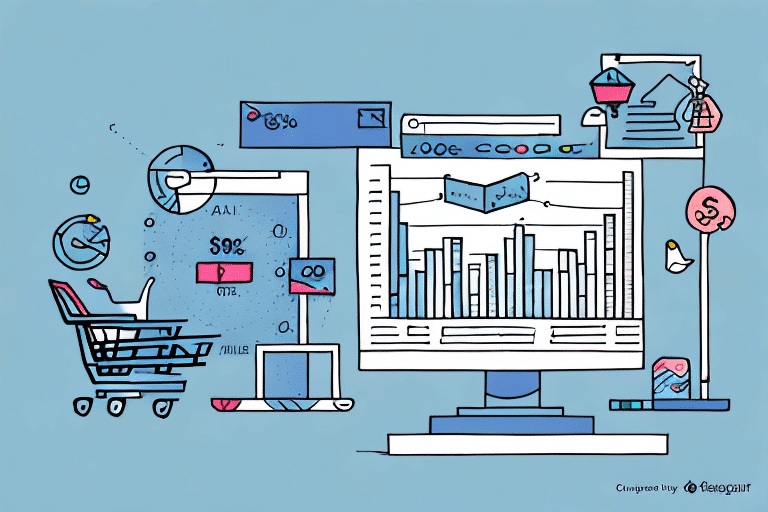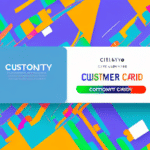Understanding Ecommerce Retention Rate Benchmarks
As an ecommerce business owner, you know that customer retention is critical to the long-term success of your business. After all, it's easier and more cost-effective to retain an existing customer than to acquire a new one. But how do you know if your retention rate is good enough, or if there's room for improvement? That's where ecommerce retention rate benchmarks come in.
The Importance of Customer Retention in Ecommerce
Why Retention Rate is Critical for Ecommerce Success
Retention rate is the percentage of customers who make repeat purchases from your ecommerce store. A high retention rate indicates customer satisfaction and loyalty, which are essential for sustained business growth. Conversely, a low retention rate may suggest that customers are dissatisfied and are likely to shop elsewhere.
Increasing your retention rate can significantly enhance your customer lifetime value (CLV), which measures the total revenue a customer generates over their relationship with your business. According to a Forbes article, improving retention rates by just 5% can increase profits by 25% to 95%.
Benefits of High Customer Retention
- Increased Revenue: Loyal customers tend to spend more over time.
- Brand Advocacy: Satisfied customers are more likely to refer others.
- Cost Efficiency: Retaining customers is typically less expensive than acquiring new ones.
Calculating and Measuring Ecommerce Retention Rates
How to Calculate Your Ecommerce Retention Rate
To calculate your retention rate, determine the number of customers who have made more than one purchase within a specific time period (such as a year), and divide it by the total number of customers at the beginning of that period. For example, if you had 1,000 customers at the start of the year and 500 made a repeat purchase, your retention rate would be 50%.
For a more detailed approach, consider using a retention rate calculator to account for different time frames and customer segments.
Tools and Metrics to Measure Retention
- Retention Rate Calculators: Tools that automate the calculation process.
- Customer Lifetime Value (CLV) Calculators: Measure the total revenue a customer is expected to generate.
- Customer Satisfaction Surveys: Gather direct feedback from customers.
- Conversion Rate Optimization Tools: Analyze and improve website performance.
- Heatmapping Tools: Assess website usability and customer behavior.
Factors Influencing Ecommerce Retention Rates
Top Factors Affecting Retention Rates
- Product Quality: High-quality products increase customer satisfaction.
- Pricing: Competitive pricing can enhance loyalty.
- Shipping Speed and Reliability: Fast and reliable shipping methods improve customer experience.
- Customer Service: Exceptional support fosters trust and loyalty.
- Website Usability: An intuitive and user-friendly website encourages repeat visits.
- Loyalty Programs: Reward programs incentivize repeat purchases.
Impact of Personalized Experiences
Personalizing the customer experience can significantly boost retention rates. By analyzing customer data such as purchase history and preferences, businesses can offer tailored recommendations and promotions. According to a study by Salesforce, 70% of consumers expect personalized experiences, making it a crucial factor in customer retention.
Best Practices to Improve Customer Retention
Enhancing Customer Service
Providing excellent customer service is one of the most effective ways to improve retention rates. This includes promptly responding to inquiries and complaints, offering personalized recommendations, and ensuring a seamless return process. Investing in customer support tools and training can help achieve this.
Implementing Loyalty Programs
Rewarding loyal customers through loyalty programs can incentivize repeat business. Programs can include discounts, exclusive offers, and points-based systems that customers can redeem for future purchases.
Ensuring Product Quality and Transparency
Maintaining high product quality and being transparent about pricing, shipping times, and return policies builds trust with customers. Clear communication can prevent misunderstandings and enhance the overall shopping experience.
Personalizing the Customer Journey
Use data-driven insights to personalize marketing efforts, product recommendations, and user interactions. Personalized email campaigns and dynamic website content can make customers feel valued and understood.
Strategies to Boost Customer Loyalty in Ecommerce
Engaging Through Social Media
Social media platforms offer a unique opportunity to engage with customers. Regular interaction, responding to comments, and sharing valuable content can strengthen customer relationships and encourage loyalty.
Providing Valuable Content
Offering valuable resources such as blogs, tutorials, and newsletters can keep customers engaged and provide additional value beyond your products. This content can help establish your brand as an authority in your industry.
Exclusive Promotions and Discounts
Offering special promotions and discounts exclusively to existing customers can incentivize repeat purchases and make customers feel appreciated.
Avoiding Common Mistakes That Hurt Retention Rates
Neglecting Customer Feedback
Ignoring customer complaints or inquiries can lead to dissatisfaction and attrition. Actively seeking and addressing feedback demonstrates that you value your customers' opinions.
Providing Poor Customer Service
Poor customer service can quickly erode customer trust and loyalty. Investing in training and support systems is essential to maintain high service standards.
Overloading with Sales and Promotions
Being too pushy with sales and promotions can overwhelm customers and lead to disengagement. Balance promotional efforts with valuable content and personalized offers.
Future Trends in Ecommerce Retention Rates
The Rise of Subscription-Based Models
Subscription-based models are becoming increasingly popular, offering recurring revenue and higher retention rates. These models provide customers with convenience and consistent value, encouraging long-term loyalty.
Utilizing Artificial Intelligence and Machine Learning
AI and machine learning technologies enable deeper personalization and predictive analytics. These tools can analyze customer data to forecast behavior and tailor experiences, enhancing retention efforts.
Emphasizing Omnichannel Experiences
Providing a seamless experience across all channels—online, mobile, and in-store—ensures that customers have a consistent and satisfying interaction with your brand, fostering loyalty.
Conclusion
Understanding ecommerce retention rate benchmarks is critical to the long-term success of your ecommerce business. By focusing on customer retention and continuously improving your retention rate over time, you can increase customer lifetime value, build a loyal customer base, and enhance overall profitability. Implementing the best practices and strategies outlined in this article will help you improve your retention rate and establish a thriving ecommerce business for years to come.




















